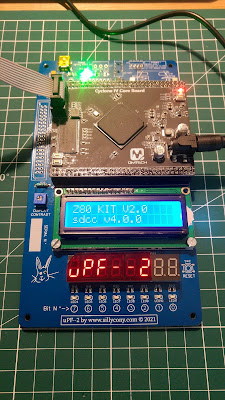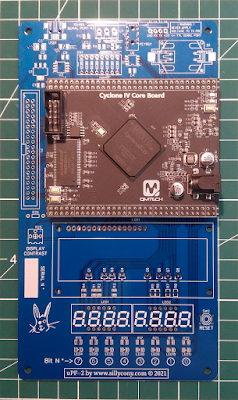The implementation of the peripherals being different on this board, I had to modify the VHDL code of the system that was working on the generic FPGA board. It took me much less time than I expected to achieve a functional result:
For the moment I have only tested the displays. The next step will consist of checking the operation of the USB serial com port as well as the communication with the keyboard. But for now, the new µPF--2 board will be able to replace the generic FPGA board on my desk and it feels good because it's been a few months now since I started porting µPF--1 to an FPGA board:










